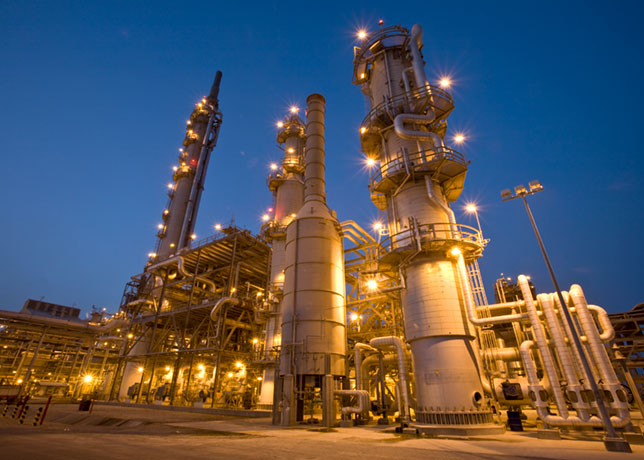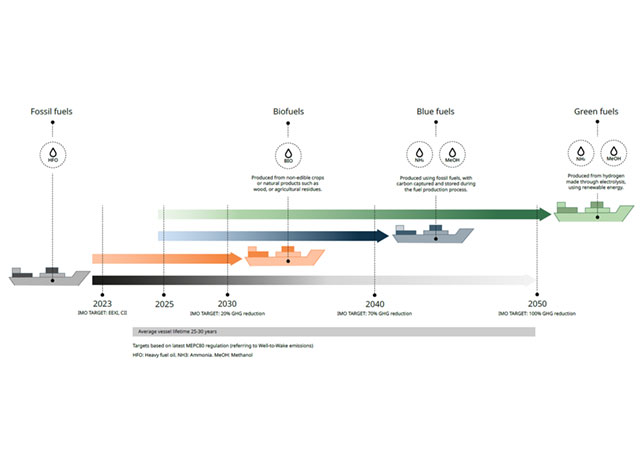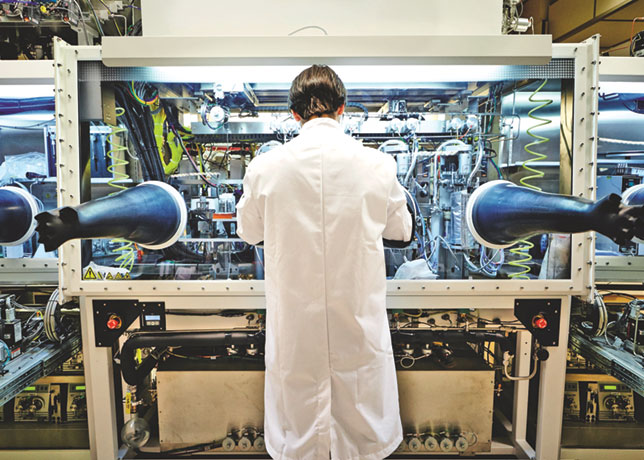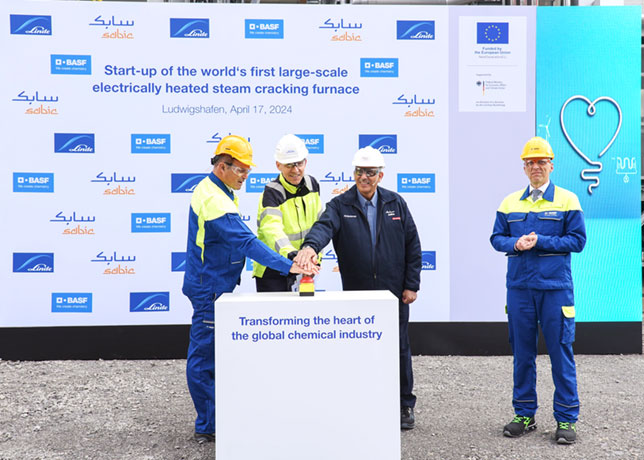
 An ammonia plant in Ain Sokhna, Egypt
An ammonia plant in Ain Sokhna, Egypt
In the transition to a low-carbon economy, ammonia is rising to prominence as a potential chemical energy carrier, with significant advantages over hydrogen. Anton Tvelenev and Dr Juan Gomez Prado from at KBR Consulting, explore the potential of this molecule to fuel progress towards cleaner, greener energy
Ammonia has garnered significant attention due to several factors, such as its ability to leverage existing ammonia trading infrastructure, lower transportation and handling costs compared to hydrogen and other potential low-carbon hydrogen carrier molecules, as well as its relatively high hydrogen mass content and lack of carbon in its molecular structure.
There are two major advantages of using ammonia over hydrogen. Firstly, ammonia boasts a higher volumetric energy density than hydrogen (with a LHV of 12.7GJ/cu m vs 4.7 GJ/cu m for hydrogen at 700 bar and 8.8 GJ/cu m for liquid hydrogen), albeit still inferior to most hydrocarbon fuels.
Thus, a switch to ammonia rather than hydrogen represents a smaller penalty when it comes to maximum energy storage volumes and the cost of such storage.
The second advantage of ammonia is the option to leverage existing ammonia global trade infrastructure.
Ammonia is a globally traded commodity with a well-established freight, storage, and transshipment infrastructure, certification, and operational standards.
In contrast, hydrogen distribution is presently confined to a few regional piped networks in the US and EU, or specific cluster site distribution networks serving various industrial consumers.
TECHNICAL CHALLENGES & KEY SAFETY CONSIDERATIONS
 |
Dr Juan Gomez Prado |
Ammonia, however, introduces a distinct set of safety risks compared to conventional fuels.
While it poses a lower fire and explosion hazard than hydrocarbon fuels, its toxic nature and hydrophilic, corrosive properties necessitate the development of entirely new safety protocols if it were to become one of the primary energy carriers for direct fuel use.
Fortunately, the fertiliser industry has accumulated a substantial body of safety knowledge that can be directly applied in this context.
Consequently, the safe handling of ammonia at import and export terminals is well understood, with experienced and trained crews c onducting loading and unloading operations.
There are also several key technical challenges associated with direct combustion of ammonia, namely:
• Handling systems will necessitate supplementary layers of protection redundancy and heightened operator training.
• The combustion characteristics of ammonia.
• Nitrogen oxides (NOX) formation.
• Implication on the frequency of refuelling and range.
The above challenges and potential mitigations will dictate the feasibility of ammonia use as a fuel for various major sectors.
UTILISING AMMONIA AS A FUEL
 |
Anton Tvelenev |
Ammonia’s combination of high energy density and a global mature supply chain, makes it a serious candidate for exploitation as a fuel. There are several emerging applications:
• Road transportation: Road transportation contributes approximately 12 per cent of global greenhouse gas (GHG) emissions.
Despite the imperative to decarbonise the road transport sector, there has been limited interest in using ammonia as a fuel due to safety and toxicity concerns, as well as a lack of public awareness regarding safe handling practices.
The one potential area for ammonia use as a fuel may involve industrial long-haul road transport applications, where automated heavy-duty vehicles can operate on routes that avoid large urban areas.
Such solutions will still need to rely on automated long-haul heavy-duty vehicles expected to emerge in the next decade and may not be justified versus hydrogen use.
• Maritime: The shipping industry accounts for approximately 1.7 per cent of all GHG emissions.
It presents one of the most challenging sectors to decarbonise due to the number of individual maritime vessels.
The safety aspects associated with ammonia toxicity rule out ammonia use for passenger shipping applications, focussing ammonia use as fuel on industrial freight navigation only.
• Aviation: The aviation industry contributes approximately 1.5 per cent of GHG emissions, also making it one of the most challenging sectors to decarbonise.
From a safety perspective, ammonia as an aviation fuel represents a manageable step change.
For the short-term, however, the aviation industry has clearly indicated sustainable aviation fuel as the preferred solution.
Longer term, the aviation sector is tentatively exploring ammonia as a potential future fuel. It is important to note that technological developments for using ammonia as fuel for aircraft engines are at a very early stage of development.
• Power: Coal-fired power generation accounts for more than a third of global electricity production and contributes to over 20 per cent of GHG emissions.
Swiftly replacing such a significant portion of the power generation infrastructure with alternative low-carbon options on a globally significant scale in the short- to medium-term is not a feasible expectation.
Hence, there is growing interest in intermediate step solutions. Integrating ammonia as a co-fuel in existing coal-fired power plants emerges as one such solution.
• Industrial: Overall, the industrial sector contributes approximately 12 per cent of GHG emissions, primarily through the release of CO2 from its process flue gas stacks.
Direct combustion of ammonia in industrial furnaces is emerging as an appealing and relatively proven alternative technical solution, since it allows for cost-effective storage of low-carbon energy relative to hydrogen or battery storage and avoids the need to invest in an in-situ ammonia cracking unit to generate hydrogen.
UNDERSTANDING THE TRUE POTENTIAL OF AMMONIA
As an integral component of the ‘hydrogen’ economy, ammonia is positioned to facilitate low-carbon hydrogen interregional trade and serve as a direct fuel for industrial decarbonisation.
However, its integration into transportation sectors will necessitate comprehensive technology development cycles to mitigate potential safety risks for users.
If we focus solely on technology readiness and the attainment of necessary certifications, without considering the commercial aspects, the following adoption scenario emerges for various uses of ammonia:
• Direct use as a single fuel in industrial boilers is proven and available for operators today.
• Co-firing is ready for commercial operations today.
• New ammonia cracker units are expected to commence operations in the next 3-4 years.
• Development of ammonia gas turbine co-firing is progressing according to its development programme and is expected to be available for retrofitting commercial gas turbine units by the early 2030s.
• Ammonia as a fuel for maritime applications is anticipated to occur at a commercial scale in the latter half of the 2030s.
Overall, and akin to other low-carbon fuel alternatives, the advancement of these potential ammonia fuel applications is expected to hinge on the evolving legislation and global co-operation agreements, as well as the impact of such regulatory changes on the global demand, affordability and corresponding energy trade.
* Anton Tvelenev is Global Petrochemical Director, and Dr Juan Gomez Prado is Head Consultant for Hydrogen and Decarbonisation at KBR Consulting.
By Abdulaziz Khattak

































































































